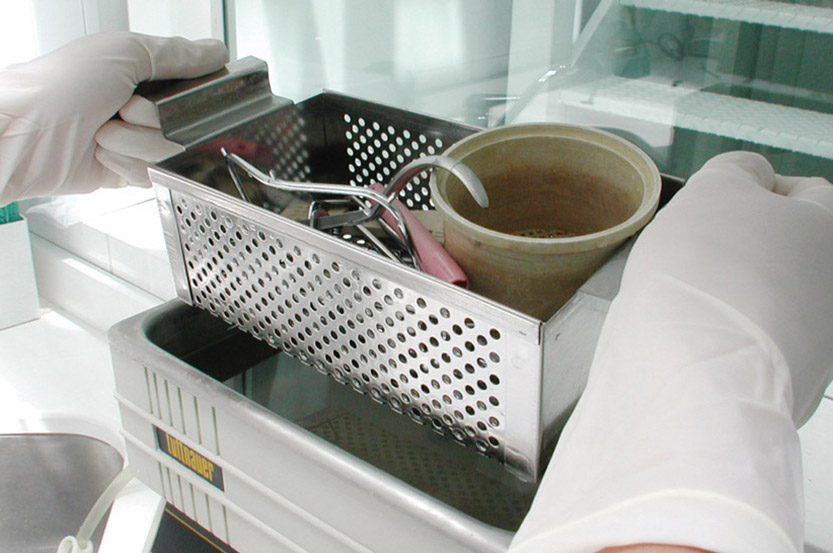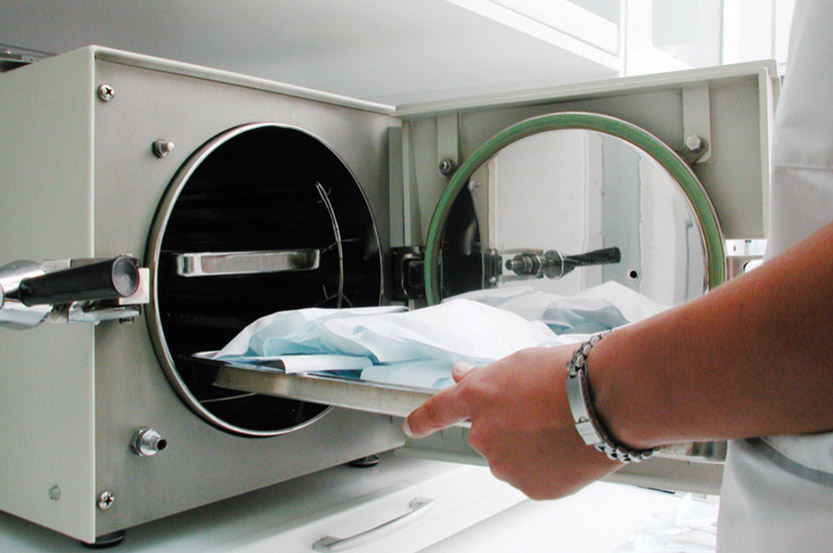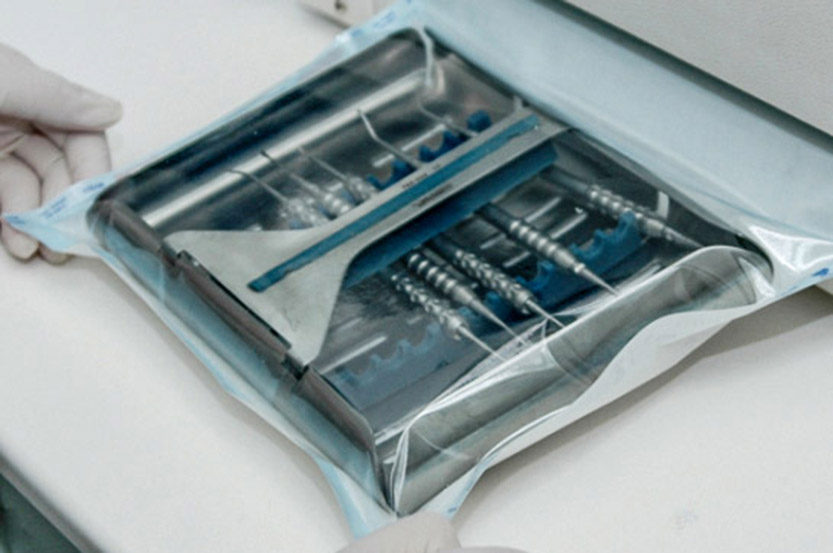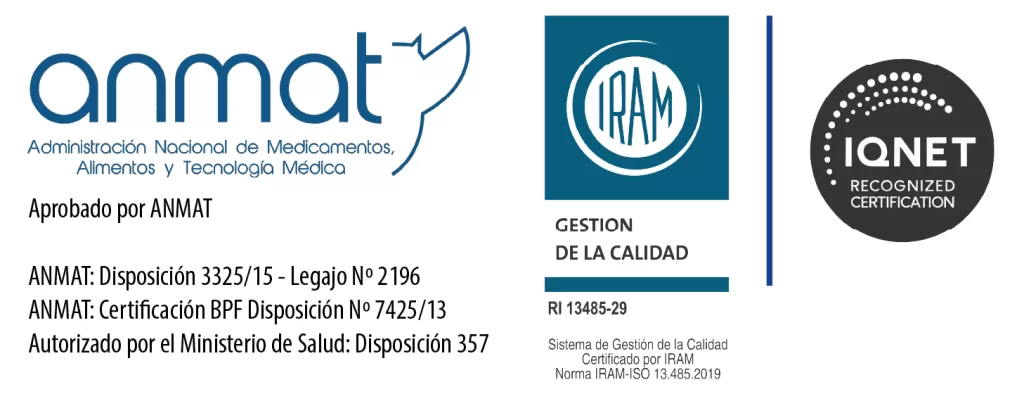The Previous Step
Before coming into contact with contaminated instruments, we have to always take care and avoid risks. Caps, gloves, chinstraps and protective glasses must be used at all times.
1st Step - Decontamination
- Remove organic material from instruments.
- Proceed to its decontamination inmediately after use on implants surgery.
- Avoid direct contact at all times, ultrasonic machines are recommended. The ideal temperature for cleansing is somewhere between 40 and 75 grades Celsius.
- Use detergents which contain 2 to 5 enzymes, bacteriostatic, non ionic, non corrosive and pH neutral. They should reach all crevices, and be used as indicated per manufacturers instruccions.
- Contact time between solution-instrument is 10 minutes (OMS-ADA) immersión at 35 khz frequency, which is enough for successful cleaning. Never add further instruments while the cleaning cycle is ongoing.
- Do not overload machine with instruments, otherwise small or delicate instruments may bend. The material should be completely immersed in the solution, always opened to effectively clean hinges and such.
- Rinse once, under a water stream whilst the instruments are still in the basket, avoid direct contact with the material, in order to remove chemical residues, detergent and foam.
- Do not use saline solutions, sodium hypochlorite or physiological saline, desinfectants, oxygenated wáter or alcohol.
- After the decontamination, the use of acetic acid peroxide is recommended .
2nd Step - Washing
- In order to remove dirt from surgical instruments, proceed to brushing manually all surfaces, including zips or dented and uneven surfaces. Always use brushes made with soft natural or nylon bristles.
- Do not use brushes with hard bristles, steel sponges or abrasive products in order to prevent the material from damage.
- Do not use glutardehído, as it causes organic waste or blood to be encapsulated. Avoid the use of hypochlorite as it may corrode the instruments.
3rd Step – Sterilisation
- This step allows for the complete removal of microorganisms (virus, bacteria, microbes and fungi) in vegetative or sporal states.
- Mechanical or Chemical indicators should be used in each sterilisation cycle.
- Allow material to sool and dry in the sterilising machine before manipulating it, in this way contamination and oxidation is avoided.
- Avoid sudden temperature changes as the instruments may become blunt.
- Always use paper and film which is indicated for autoclave or ethylene oxide sterilisation. Paper should be of medical grade with chemical indicators. Do not use stapling nor cover orífices with tapes, as this may cause microorganisms to enter. Autoclave sterilisation should be run at 121 º C, at 1 atm pressure for 30 minutes, or at 134ºC at 2 atm pressure for 20 minutes.
- In the stove for 1 hour at 170ºC or 2 hours at 160ºC.
- Alternatively, with ethylene oxide.
- Always place material away from the autoclave walls. Chemical sterilisation is not recommended as it may cause discoloration and damage to the case.
- Sterilisation with ethylene oxide is the most practical and efficient way to sanitise instruments which are sensitive to heat, such as: Electrical equipment, surgical instruments (for general, Arthroscopic, laparoscopic, ophthalmological, otorhinolaryngological, costmetic, or Maxillofacial surgery, as well as dental, in general or for implants, as sharpness of the instruments are not damaged with this method), hoses, suction, disposable clothing and medical devices in general, etc; according to IRAM 3007/08 dispositions.
Storage
- Storage is almost as important as sterilisation. Instruments must be stored in plastic cases or closed cupboards. Due ates of sterilised instruments should be verified in an ongoing basis.







